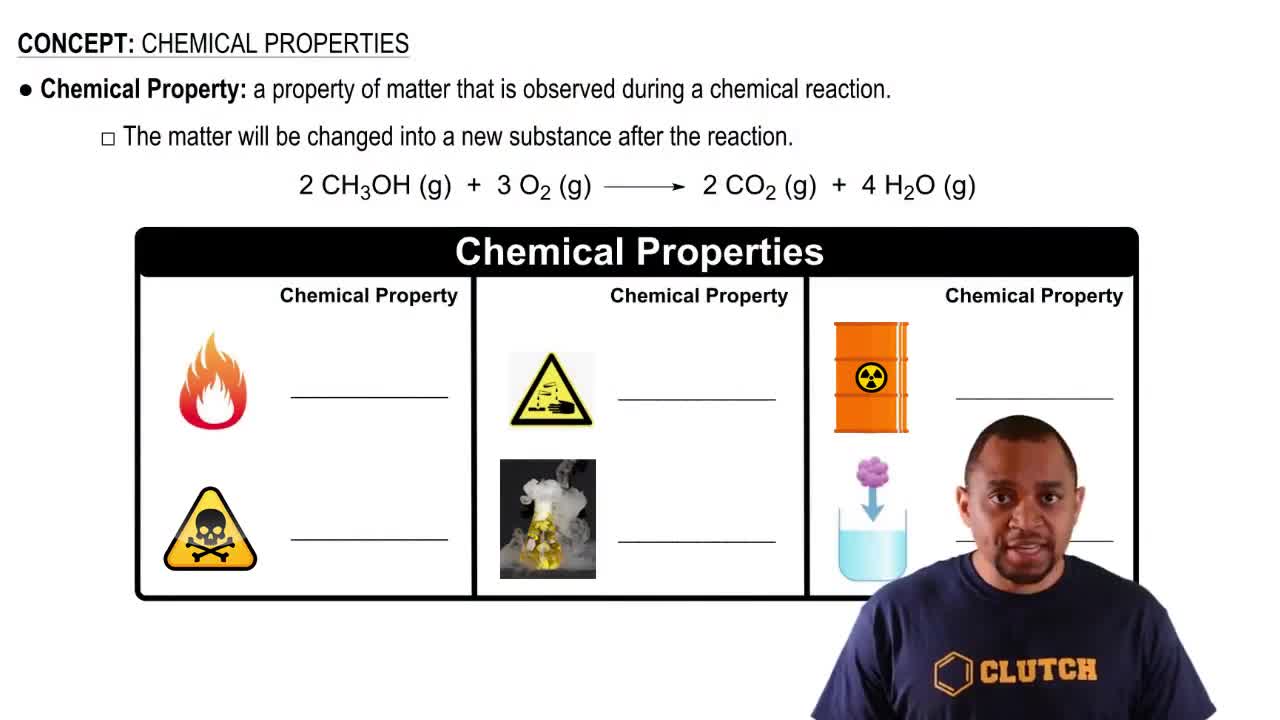Give the chemical symbol or name for the following elements, as appropriate: c. potassium
In the process of attempting to characterize a substance, a chemist makes the following observations: The substance is a silvery white, lustrous metal. It melts at 649 °C and boils at 1105 °C. Its density at 20 °C is 1.738 g/cm3. The substance burns in air, producing an intense white light. It reacts with chlorine to give a brittle white solid. The substance can be pounded into thin sheets or drawn into wires. It is a good conductor of electricity. Which of these characteristics are physical properties, and which are chemical properties?
 Verified step by step guidance
Verified step by step guidance
Verified Solution
Key Concepts
Physical Properties

Chemical Properties

Distinguishing Between Physical and Chemical Properties

Give the chemical symbol or name for each of the following elements, as appropriate: a. carbon
You are hiking in the mountains and find a shiny gold nugget. It might be the element gold, or it might be “fool’s gold,” which is a nickname for iron pyrite, FeS2. Which of the following physical properties do you think would help determine if the shiny nugget is really gold—appearance, melting point, density, or physical state?
(a) Read the following description of the element zinc and indicate which are physical properties and which are chemical properties. Zinc melts at 420 °C. When zinc granules are added to dilute sulfuric acid, hydrogen is given off and the metal dissolves. Zinc has a hardness on the Mohs scale of 2.5 and a density of 7.13 g/cm3 at 25 °C. It reacts slowly with oxygen gas at elevated temperatures to form zinc oxide, ZnO.
(b) Which properties of zinc can you describe from the photo? Are these physical or chemical properties?
Label each of the following as either a physical process or a chemical process: b. boiling a cup of water
